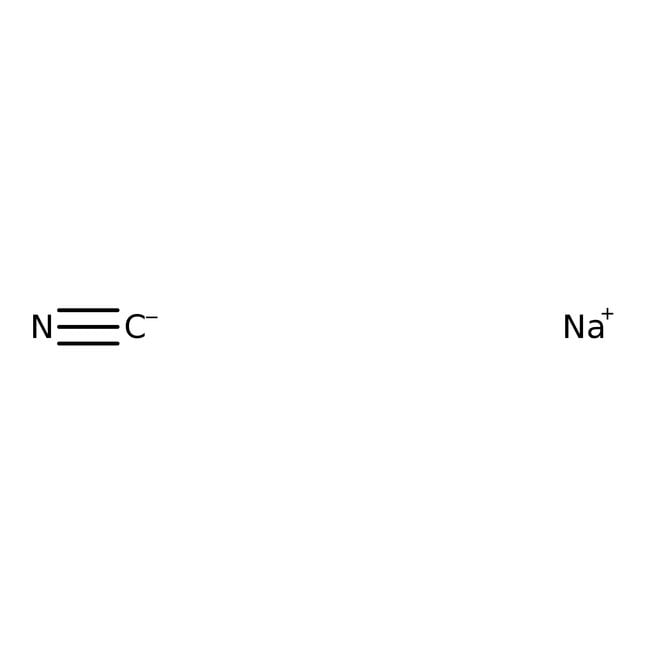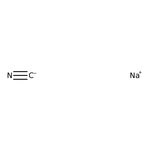Search Thermo Fisher Scientific
Sodium cyanide, granules, 98%, Thermo Scientific Chemicals



Sodium cyanide, granules, 98%, Thermo Scientific Chemicals
Chemical Identifiers
Specifications
Description
This Thermo Scientific Chemicals brand product was originally part of the Alfa Aesar product portfolio. Some documentation and label information may refer to the legacy brand. The original Alfa Aesar product / item code or SKU reference has not changed as a part of the brand transition to Thermo Scientific Chemicals.
Sodium cyanide is used as a starting material for the preparation of Reissert compounds and cyanogen bromide, cyanuric chloride and cyanogen chloride. It acts as a catalyst for the aminolysis of esters to primary amides. Furthermore, it is used for fumigation, electroplating, extracting gold and silver in mining industry. In organic synthesis, it is involved in the cyanation reaction of alkyl halides under phase transfer conditions.
Solubility
Soluble in water, ammonia, methanol and ethanol. Slightly soluble in dimethylformamide. Insoluble in dimethylsulphoxide.
Notes
Hygroscopic. Do not store near acids. Incompatible with strong oxidizing agents and carbon dioxide.
Figures
Documents & Downloads
Certificates
Frequently asked questions (FAQs)
Citations & References
Safety and Handling
Classification of the substance or mixture
CLP classification - Regulation(EC) No 1272/2008
Label Elements
Signal Word
Danger
Hazard Statements
H300 + H310 + H330 - Fatal if swallowed, in contact with skin or if inhaled
H372 - Causes damage to organs through prolonged or repeated exposure
H410 - Very toxic to aquatic life with long lasting effects
Physical hazards
H290 - May be corrosive to metals
EU Specific Hazard Statements
EUH032 - Contact with acids liberates very toxic gas
Precautionary Statements
P280 - Wear protective gloves/protective clothing
P302 + P350 - IF ON SKIN: Gently wash with plenty of soap and water
P304 + P340 - IF INHALED: Remove person to fresh air and keep comfortable for breathing
P310 - Immediately call a POISON CENTER or doctor/physician
P330 - Rinse mouth
P390 - Absorb spillage to prevent material damage